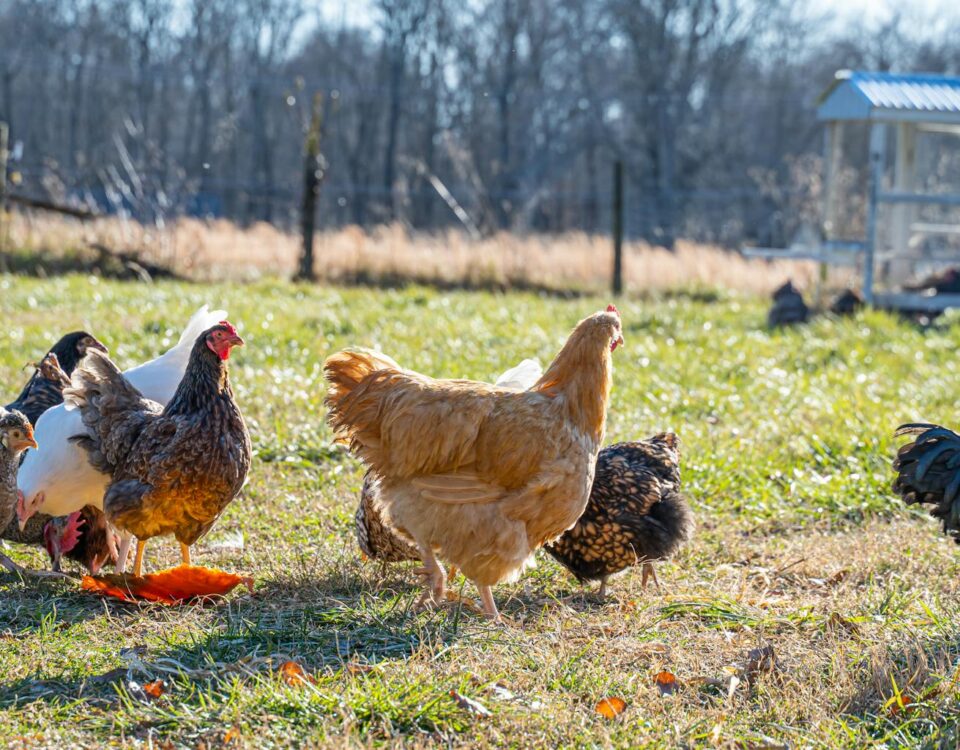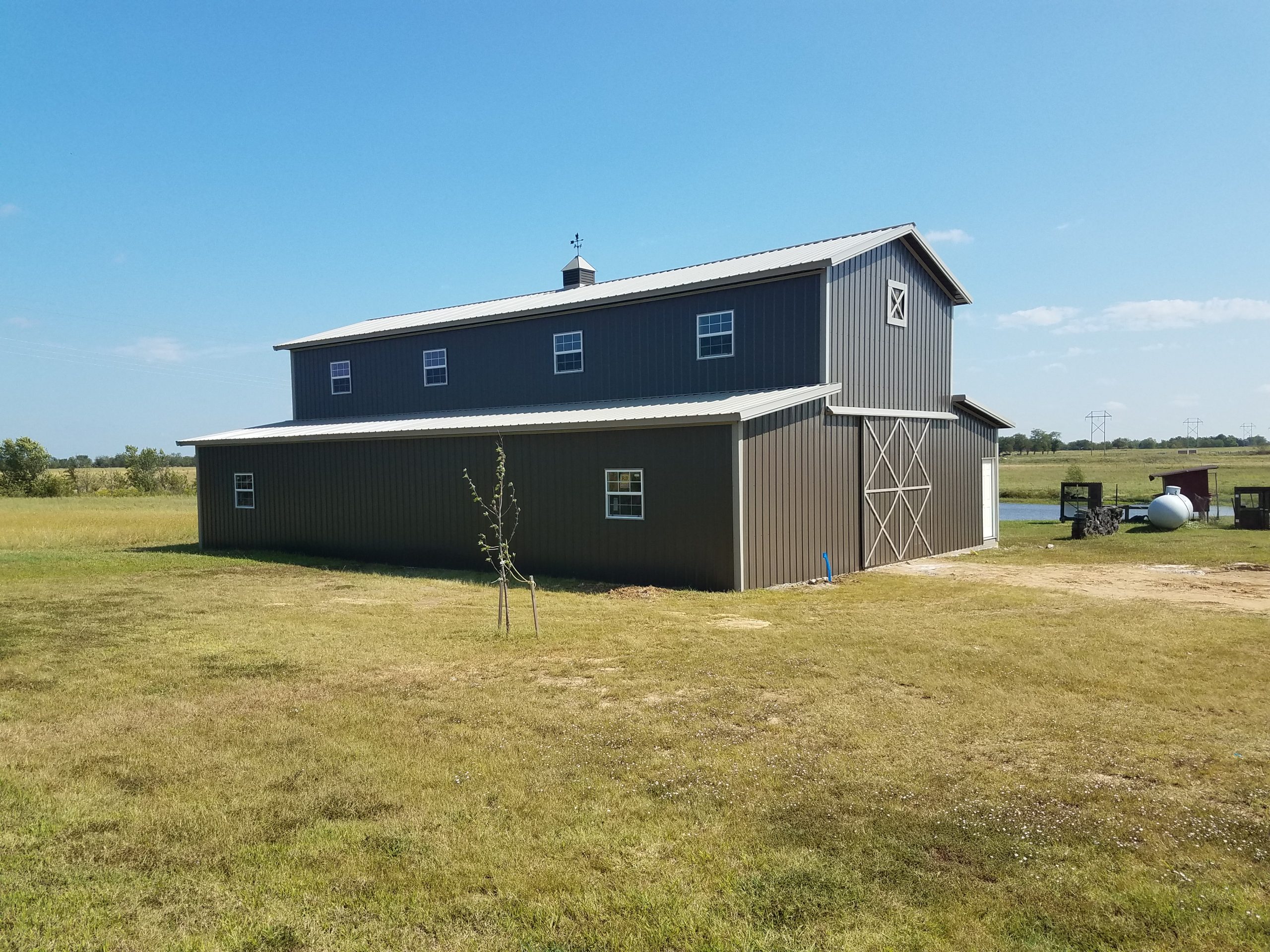
Two-Story Shed Benefits
September 17, 2019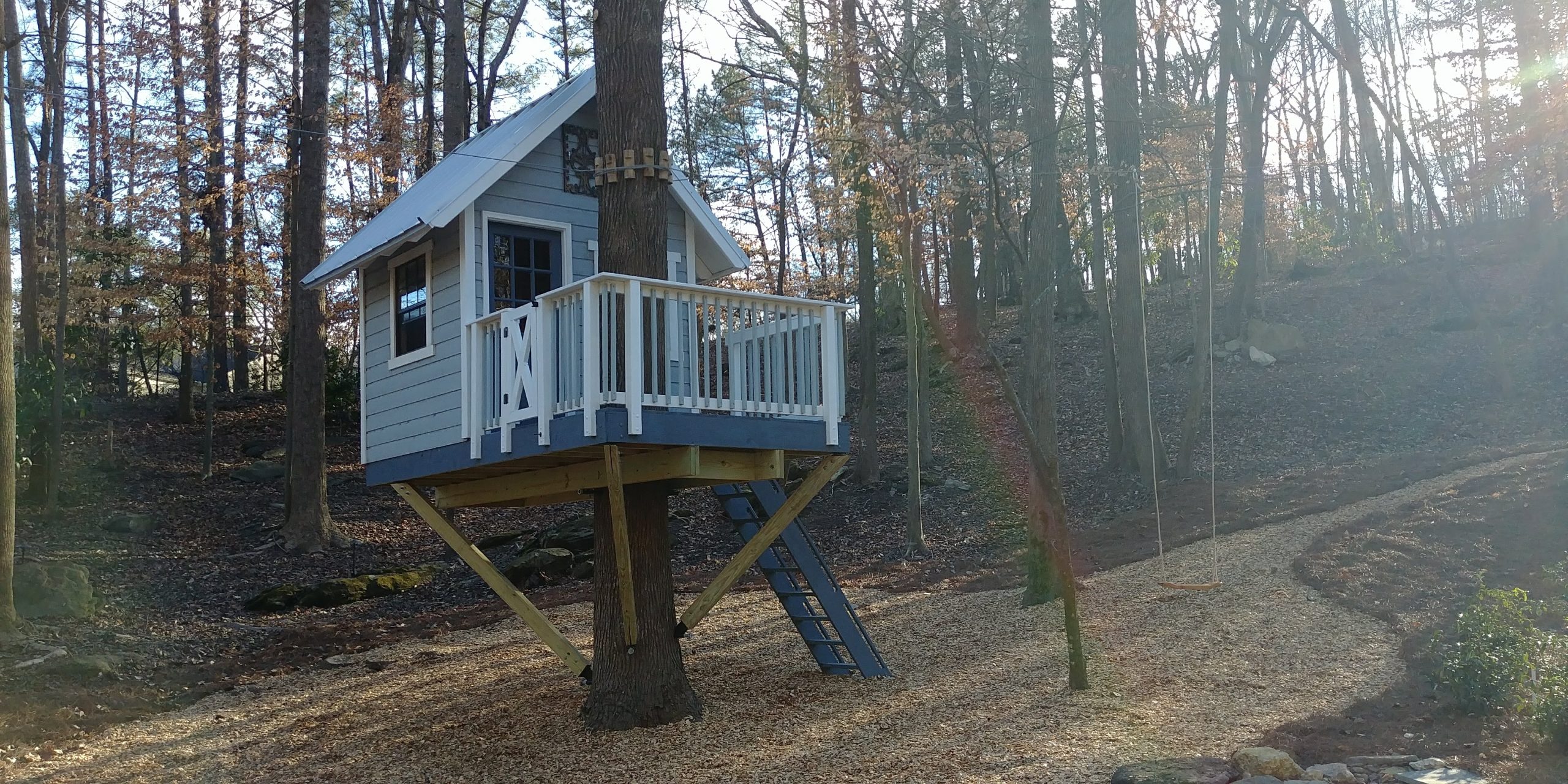
6 Tips for Playhouse Year-Round Comfort
January 16, 2020Choices In Chicken Coop Design

Let’s find out what is the best chicken coop design for your flock and situation. There are many different choices in chicken coop design to choose from; mobile chicken coops, stationary chicken coops, and semi-portable chicken coops that marry the best of both types of chicken coops. Below we discuss the merits of each type of design so you can choose what fits your needs and flock needs best.
Stationary Chicken Coop
Stationary chicken coops are meant to be stationary, permanent, and not moved. Stationary coops can be converted backyard sheds or you may build your own stationary chicken coop from scratch. Stationary coops generally have a solid floor made of wood, concrete, or blocks.
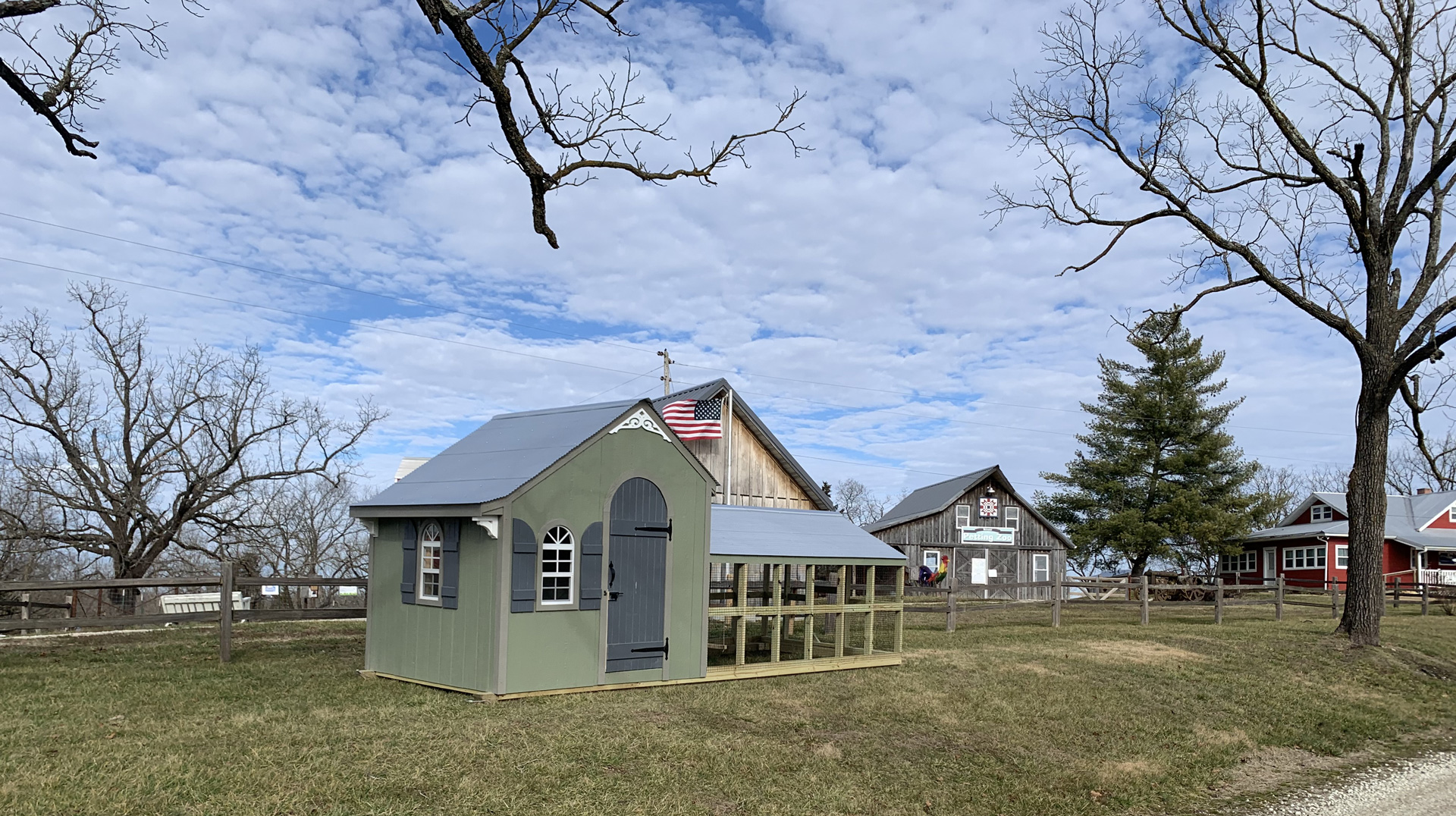
Stationary coops usually have a chicken run attached to the chicken coop to give the chickens a yard for access to the ground and the outdoors. We suggest that the chicken run also has a chicken wire roof, to make it more predator-proof and that the chicken yard is also wired in 1/4″ chicken wire mesh to keep varmints out and your flock safe.
Stationary coops are the safest but are the most costly and time-consuming to build. Also with a permanent coop, you are looking at slopping out your chicken coop to get to that wonderful chicken manure. If chicken manure is not a priority for your garden many stationary coops with concrete floors can be built at a bit of a slope with a drain at one end to carry out the chicken feces when you spray down the interior floor.
Using pine shavings and allowing the chicken poop to accumulate on the bedding allows for decomposition to happen right on the floor of the chicken coop; keeping smells to a minimum and you have nearly instant compost this way. Just use a pitchfork or flat shovel to scoop out and use the compost in your garden.
When thinking of predators and sturdiness, stationary coops tend to pull the lead. A stationary coop should be built well above grade or water table to avoid flooding during heavy rains. We suggest with a stationary chicken coop that you make it so you have multiple choices on attaching a run, so at least the chicken run can be moved. Moving the chicken run is important since the chickens tend to get the yard down to bare dirt making for more parasite problems, and finally, vegetation won’t be grown. So, rotating your chicken run is best for the health of your flock and gives you access to the chicken manure in the yard at intervals.
Semi-Portable Chicken Coop
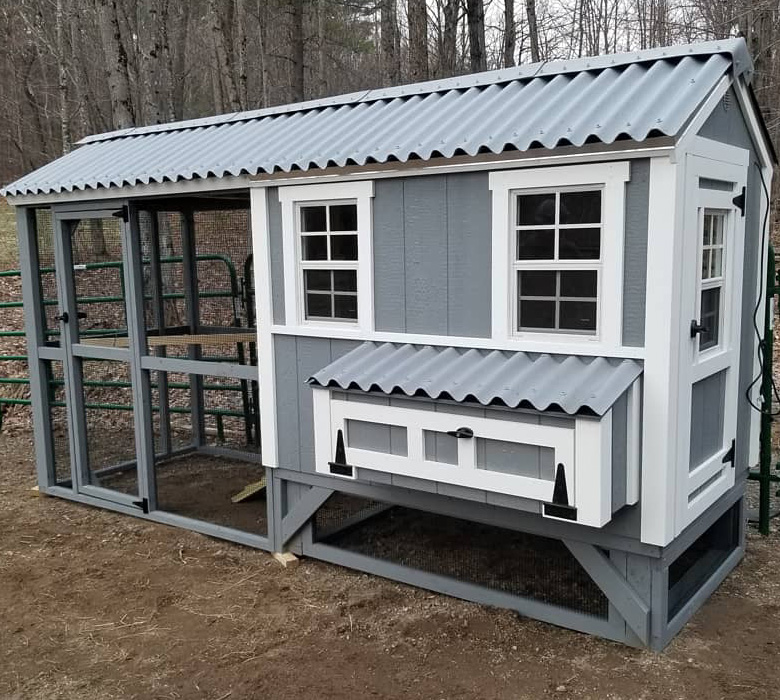
A semi-portable chicken coop gives you the best of two worlds in many ways in chicken coop design. Semi-mobile coops can be moved but usually, they are designed to be in one location for weeks and months at a time. Shed-style coops with wheels can be moved by tractor or pickup truck. One of the advantages of a semi-portable coop is easy access to the chicken manure. No need for a semi-portable coop to slop out the chicken coop and also a great way to give your garden the nutrients it needs to produce great fruits and vegetables for your family.
Portable Chicken Coop Design
Having had both stationary and semi-portable chicken coops I tend to lean toward the semi-portable design and portable chicken coop design for under 6 hens. It’s wonderful when you are finished with your vegetable garden for the season to move your portable coop to the vegetable garden and let the chickens clean up the last of the crop while leaving their droppings to nourish the next season’s soil. As you expand your chicken flock you can always use the portable version for the smaller chickens once they graduate from a safe, warm, indoor location to keep them separate from the larger hens.
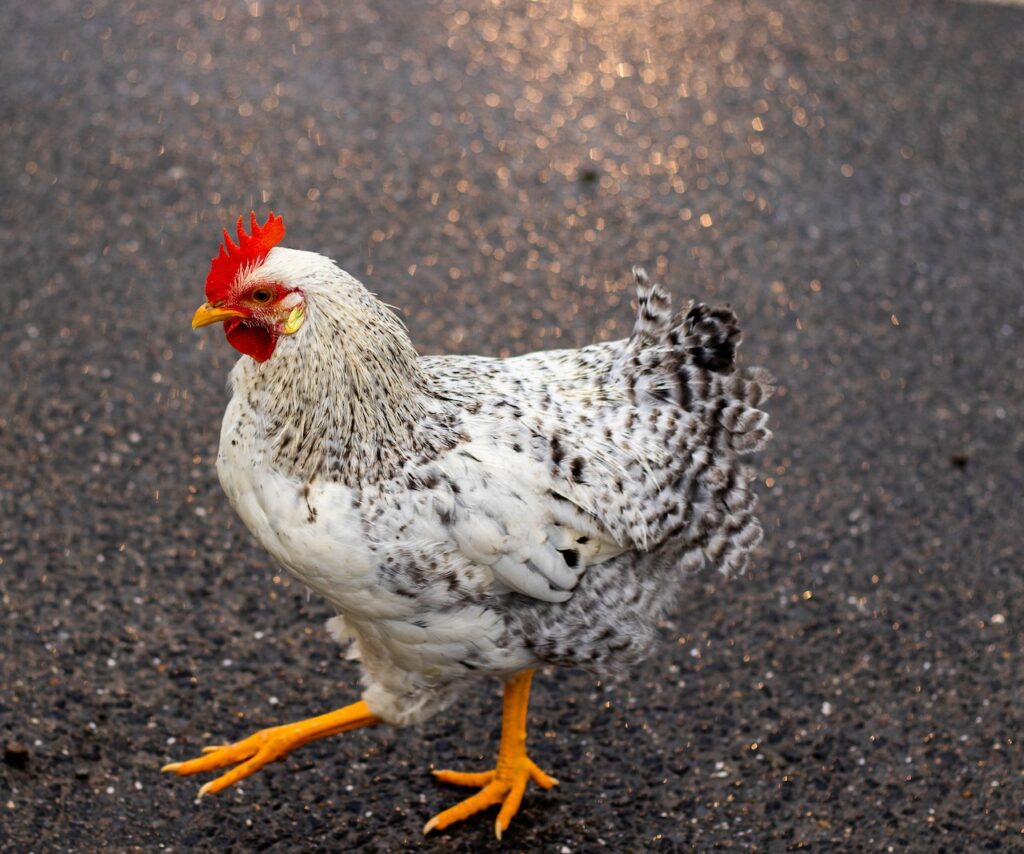
Portable coops are great but they can be a bit of a design challenge when it comes to predators, wet weather, and high winds. For the predator problem, we suggest checking your coop daily to ensure there hasn’t been any intrusion by predators. Also having a wire mesh floor can help keep predators at bay and it also gives more stability to your portable chicken coop design.
As to high winds, we suggest using curved rebar or heavy-duty ground stakes to keep your portable chicken coop strong and stationary. Also for any rain challenges if you distribute 3-6 inches of straw or hay inside your portable chicken coop, it gives your hens a dry place to stand till the rains subside.
For all your chicken coop building needs look to Shed Windows and More for chicken coop windows, and hardware for your chicken coop. Many of the photos you see in our blog today are designs our happy customers have built to house their laying hens. Be sure to send us photos of your finished DIY projects.

